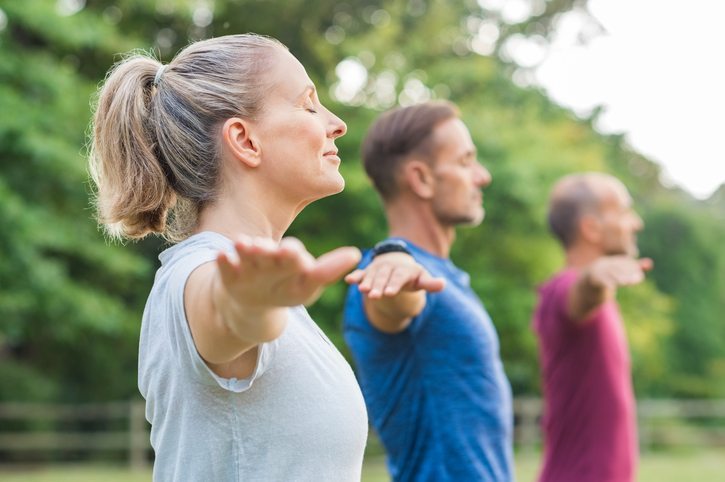It seems simple enough. We breathe in and we breathe out, and don’t really give the matter much thought.
However, during a workout or when our body is being challenged, harnessing the power of our breath can enhance our workout while also ensuring that our body is receiving optimal oxygen. Proper breath control also means that we can exercise longer with less effort, and avoid side effects has as painful side stiches.
Different workouts require different breathing techniques. Here are our top tips for four common workouts.
Running
Running is great and simple cardio exercise, but while it gets your heartrate up, incorrect breath control can leave you huffing and puffing or nursing a stich. Accoridng to Alison McConnell, a breathing expert and author of Breathe Strong Perform Better, most runners find it comfortable to take one breath for every two foot strikes. This means taking two steps while breathing in, and then two again while breathing out. This synchronisation of the breath to your running patterns will help prevent your organs from putting unnecessary pressure on your diaphragm.
Yoga
Yoga is an exercise form that is completely centred on the breath. There are two popular breathing methods to help you relax and also to get through the more rigorous poses.
If you are trying to calm your body, or are doing a relaxation pose deep “equal breathing” is the best way to calm your nervous system. This involves deep belly breaths, where your inhale matches the length of your exhale.
For the more rigorous poses, your yoga instructor may encourage you to use your ujjayi breath. This is an audible, deep breath in and out through the nose, while you maintain a slight contraction in the back of your throat. Focusing on your breath means that you are more present, and also avoid the temptation of holding your breath on more difficult poses.
Strength Training
For those lifting weights, breathing out on the exertion is the simple rule to follow. For example, if you are pushing a bench press of your chest, exhale on the push and then inhale as you bring it slowly to your chest. Breathing during exertion is important not only to ensure oxygen flow but also to prevent internal injuries such as hernias and high blood pressure.
Swimming
Swimming is a great exercise to control your breathing. Particularly if you are swimming in a heated pool, the humid air often makes this a gentler exercise for anyone who has respiratory difficulties. The critical action here for breathing is to begin exhaling through your nose or mouth as soon as you finish breathing in. You must exhale while your face is in the water, so your lungs are ready to inhale as soon as you come up for air.
Before any exercise program, it is important to consult with your doctor or medical professional to see what is right for you.




